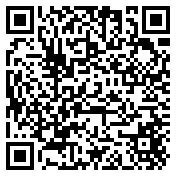Theories for Learning and Teaching for English as a Foreign Language (EFL) Learners
Theories for Learning and Teaching of
|
| Theories | Definition |
| Audio-Lingual Method | This approach relies heavily on repetition, mimicry, and drilling to develop oral language skills. It is based on the behaviorist theory of language learning and emphasizes accurate pronunciation and grammar patterns through intensive practice. |
| Behaviorism | This theory, associated with B.F. Skinner, focuses on conditioning and reinforcement to shape behavior in language learning. |
| Cognitive Theory | Developed by Jean Piaget, this theory emphasizes the role of mental processes in language acquisition. |
| Communicative Language Teaching (CLT) | This approach prioritizes communication and real-life language use, encouraging students to interact in authentic contexts. |
| Community Language Learning (CLL) | CLL is based on humanistic principles and emphasizes the importance of building a supportive and non-threatening learning environment. The teacher acts as a counselor, supporting learners in their language development based on their needs and interests. |
| Content-Based Instruction (CBI) | CBI integrates language learning with the study of content from other subjects, such as science, history, or literature. By teaching language through meaningful content, students can develop language skills while acquiring knowledge in other disciplines. |
| Critical Pedagogy | Critical pedagogy advocates for empowering learners to think critically about language and society. It encourages students to question power structures and social inequalities through language use. |
| Direct Method | It is known as the Natural Method, this approach emphasizes teaching English through immersion and communication. Grammar is taught inductively, and students are encouraged to think and speak in English without relying on their native language. |
| Dynamic Assessment | Dynamic assessment involves actively intervening in the learning process to understand learners' potential and provide tailored support. It focuses on the assessment of learners' learning abilities rather than just their current level of proficiency. |
| Ecological Language Learning | This approach considers language learning as a dynamic process influenced by the learners' immediate environment and interactions. It emphasizes the importance of context, culture, and social factors in language learning. |
| Grammar-Translation Method | An old traditional method that focuses on teaching grammar rules and translating texts between the target language (English) and the native language. Vocabulary is often memorized through word lists. |
| Multiple Intelligences | Theory Howard Gardner's theory proposes that individuals possess different types of intelligences, and educators should cater to these diverse abilities. |
| Neuro-Linguistic Programming (NLP) | NLP explores the relationship between language, behavior, and the mind. In an EFL classroom, teachers may use NLP techniques to enhance students' motivation, self-confidence, and language learning abilities. This approach explores how the brain processes language and how teaching methods can align with natural brain processes for more effective language learning. |
| The Silent Way | Developed by Caleb Gattegno, this method emphasizes learner autonomy and self-discovery. Teachers remain mostly silent, allowing students to develop their language skills by problem-solving and self-correction. |
| Social Interactionist | Theory Lev Vygotsky's theory highlights the importance of social interaction and collaborative learning in language development. |
| Sociocultural Theory | Rooted in the work of Lev Vygotsky, this theory underscores the impact of cultural and social factors on language learning. |
| Suggestopedia | Developed by Georgi Lozanov, this method employs relaxation and music to reduce anxiety and facilitate language learning. Learners are exposed to dialogues and texts in a calm environment. |
| Task-Based Language Assessment (TBLA) | TBLA assesses learners' language abilities based on their performance in completing meaningful tasks. It aligns assessment with the principles of task-based language teaching. |
| Task-Based Language Teaching (TBLT) | TBLT focuses on engaging learners in completing tasks using the target language, which helps them develop language skills in a more authentic context. Tasks can be real-world activities that require learners to negotiate meaning and use language functionally. |
| Technology-Enhanced Language Learning (TELL) | TELL incorporates digital tools and technologies in language learning to enhance engagement, interaction, and access to authentic language resources. |
| Total Physical Response (TPR) | This method, proposed by James Asher, involves using physical movement and action to reinforce language learning. Students respond to commands in English, and comprehension is emphasized over immediate production. |
| The Affective Filter Hypothesis | Krashen's theory suggesting that language acquisition is affected by emotional variables, such as anxiety and motivation. |
| The Input Hypothesis | Another theory by Stephen Krashen, which posits that learners improve their language skills by receiving comprehensible input slightly above their current level. |
| The Lexical Approach | Michael Lewis's theory emphasizes the significance of lexical (vocabulary) learning and chunk-based language use. |
| The Natural Approach | Developed by Stephen Krashen and Tracy Terrell, this theory advocates for language learning through meaningful exposure and comprehension, similar to how children acquire their first language. |
| The Noticing Hypothesis | This theory suggests that learners need to notice the differences in the language input they receive to acquire new linguistic structures effectively. Teachers can create opportunities for learners to notice specific language features in context. |
| Vygotsky's Zone of Proximal Development (ZPD) | Vygotsky's sociocultural theory argues that learners make the most progress when they are challenged to work in their "Zone of Proximal Development." This zone refers to the difference between what learners can do independently and what they can achieve with the guidance and support of a more knowledgeable person, such as a teacher or a peer. |
| Zone of Feasible Development (ZFD) | The ZFD refers to the range of tasks that students can accomplish successfully with the assistance of the teacher or peers. It encourages teachers to provide tasks that challenge students without overwhelming them. |
โปรแกรมวิชาภาษาอังกฤษ คณะครุศาสตร์ มหาวิทยาลัยราชภัฏกำแพงเพชร. (2566). Theories for Learning and Teaching for English as a Foreign Language (EFL) Learners. สืบค้น 30 พฤศจิกายน 2568, จาก https://edu.kpru.ac.th/english/?lang=TH&page_id=385


